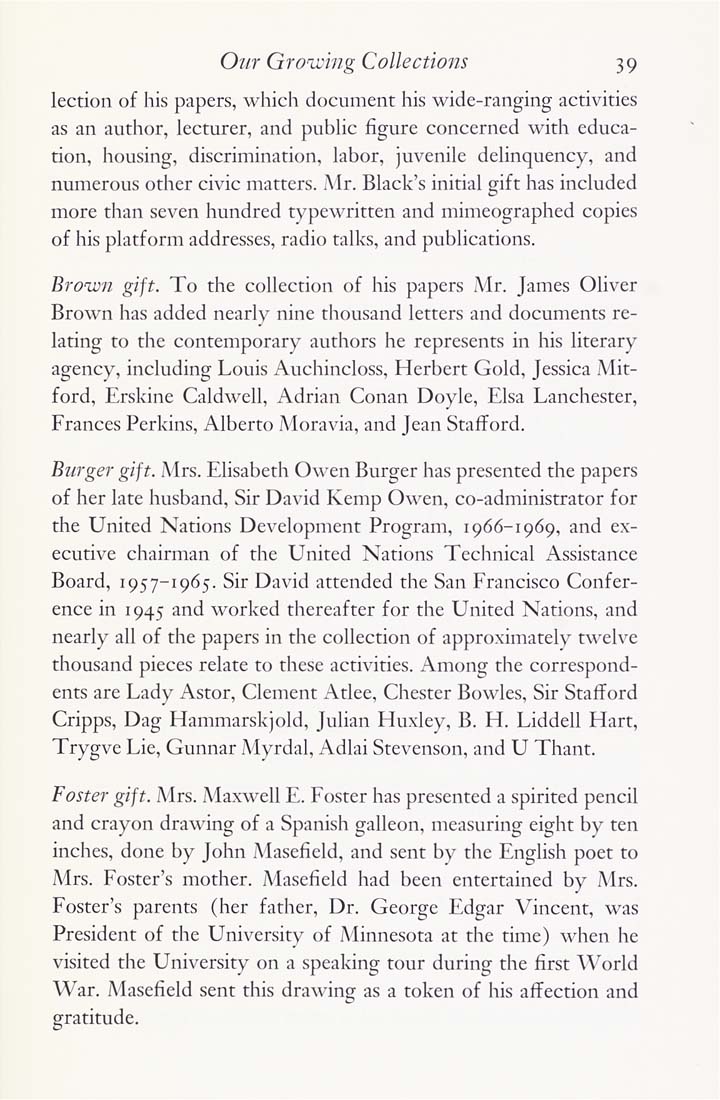Columbia Library columns (v.23(1973Nov-1974May))
(New York : Friends of the Columbia Libraries. )
|
||
|
|
|
|
| v.23,no.2(1974:Feb): Page 39 |

Our Growing Collections 39 lection of his papers, which document his wide-ranging activities as an author, lecturer, and public figure concerned with educa¬ tion, housing, discrimination, labor, juvenile delinquency, and numerous other civic matters. .Mr. Black's initial gift has included more than seven hundred typewritten and mimeographed copies of his platform addresses, radio talks, and publications. Brown gift. To the collection of his papers Mr. James Oliver Brown has added nearly nine thousand letters and documents re¬ lating to the contemporary authors he represents in his literary agency, including Louis Auchincloss, Herbert Gold, Jessica Mit- ford, Erskine Caldwell, Adrian Conan Doyle, Elsa Lanchester, Frances Perkins, Alberto Moravia, and Jean Stafford. Burger gift. Mrs. Elisabeth Owen Burger has presented the papers of her late husband. Sir David Kemp Owen, co-administrator for the United Nations Development Program, 1966-1969, and ex¬ ecutive chairman of the United Nations Technical Assistance Board, 1957-1965. Sir David attended the San Francisco Confer¬ ence in 1945 and worked thereafter for the United Nations, and nearly all of the papers in the collection of approximately twelve thousand pieces relate to these activities. Among the correspond¬ ents are Lady Astor, Clement Atlee, Chester Bowles, Sir Stafford Cripps, Dag Hammarskjold, Julian Huxley, B. H. Liddell Hart, Trygve Lie, Gunnar Myrdal, Adlai Stevenson, and U Thant. Foster gift. Mrs. Maxwell E. Foster has presented a spirired pencil and crayon drawing of a Spanish galleon, measuring eight by ten inches, done by John Masefield, and sent by the English poet to Mrs. Foster's mother. jMasefield had been entertained by Mrs. Foster's parents (her father. Dr. George Edgar Vincent, was President of the University of Minnesota at the time) when he visited the University on a speaking tour during the first World War. Masefield sent this drawing as a token of his affection and gratitude. |
| v.23,no.2(1974:Feb): Page 39 |







